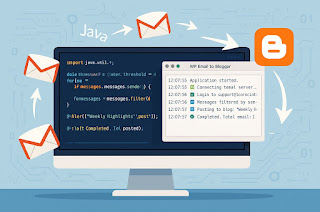What Is EAI ?
A central service through which other applications communicate. Its primary goals are to communicate changes in the data between applications (sharing or synchronizing data), and to invoke the business logic or services of an application from other applications (remote invocation).
Application integration is the secure and orchestrated sharing of processes and/or data between applications within the enterprise.
Benefits of Application Integration
• Allowing applications to be introduced into the organization more efficiently and at a lower cost
• allowing you to modify business processes as required by the organization
• providing more delivery channels for your organization
• allowing you to add automated steps into business processes that previously
• Required manual intervention
Types of Application Integration
• Manual application integration
• Semi-automated application integration
• Fully automated application integration
What are Gentran Integration Suite & its OS and native database and architecture?
Gentran Integration Suite is a business process-centric transaction engine for modeling and Managing business processes. Gentran Integration Suite supports high volume electronic Message exchange, complex routing, translation and flexible integration, and real-time Interaction with multiple internal systems and external business partners.
GIS Features:
• Support for emerging B2B standards such as EDIINT, ebXML, BizTalk, exchange connectivity, and custom XML exchange.
• Support for widely used EDI standards.
• Internationalization support through encoding character sets including double-byte character sets.
• Digital certificate support.
• Business process tracking and search capabilities.
• Platform-independence through use of non-proprietary, standards-based architectures such as Java, XML, and BPML.
• Adapters and services to simplify integration to applications and other IT systems external to your business.
• Tools to create custom adapters and services.
• Visual modeling and data mapping tools for easy business process mapping.
• Web Extensions to enable human interaction with business processes.
• Predefined business processes that can be configured to meet your needs.
• Trading Partner management tools Perimeter server that manages communication flows to resolve network congestion, security, and scalability for high volume Internet B2B "gateway" environments.
• Mail boxing capabilities.
Gentran Integration Suite Tools
• Operations tools
• Monitoring tools
• Trading profile tools
Gentran Integration Suite, a modular solution built on the Sterling Commerce Multi-Enterprise Services Architecture (MESA), enables the intelligent and timely use of business information by uniting any-to-any integration-brokerage services, multi-gigabyte file support, and strong business process management capabilities including detailed analytics and content-based routing for decision-making support.
Its Native database is MYSQL and it provides support to all the database types.
What are the other products from Sterling commerce?
With a rich history in e-business innovation, Sterling Commerce is a worldwide leader in business integration solutions. World Leading Business Integration Solutions Provider. Sterling Commerce, a wholly owned subsidiary of SBC Communications Inc. (NYSE:SBC), is one of the world’s largest providers of business integration solutions. For Global 5000 companies and their customers, suppliers and partners, Sterling Commerce software and services help maximize business performance and improve business metrics through integration of applications, external partner systems and people both within and between companies. With more than 30,000 customers in a vast range of industries, Sterling Commerce is a recognized leader in business integration with two product lines: Connect, Sterling Integrator (formerly known as Gentran).
Connect: Direct
Connect:Direct moves files containing any type of data across multiple platforms, disparate file systems and disparate media. The de facto standard in many industries throughout the world, Connect:Direct is ideal for automating the movement of large volumes of data and for connecting to remote offices and business partners over the Internet.
Provides assured data delivery based on proprietary transfer technology that includes extensive protection against network interruptions.
Connect:Direct support platforms from the largest mainframes to personal computers running OS/390, MVS, VM, VMS, VSE, Tandem, UNIX, Linux or Windows NT.
Additional Version providing file transfer services to existing and future SWIFT users through integration of Connect:Direct with the SWIFTAlliance Gateway.
Gentran: Server
Gentran:Server Windows bring full-scale translation and management of EDI/XML to Windows NT. Ease-of-use, low cost installation, and inherent message-based architecture, Windows NT is fast becoming the preferred platform for e-business infrastructure.
Gentran:Server Windows solution has a number of components that work together as a system. Major components include mapping utilities, commerce partner configuration utility, data translator, message management subsystems, process control, Communication Service and Mailbox Service. In addition, Gentran:Server Windows utilizes a database for storage of commerce partner data, interchange data and various system configuration profiles.
Gentran:Server with SAP Extension is the link to seamlessly connect Gentran solutions with R/3 system. Gentran provides a set of ready-made, SAP-certified interfaces for the most common EDI transactions.


